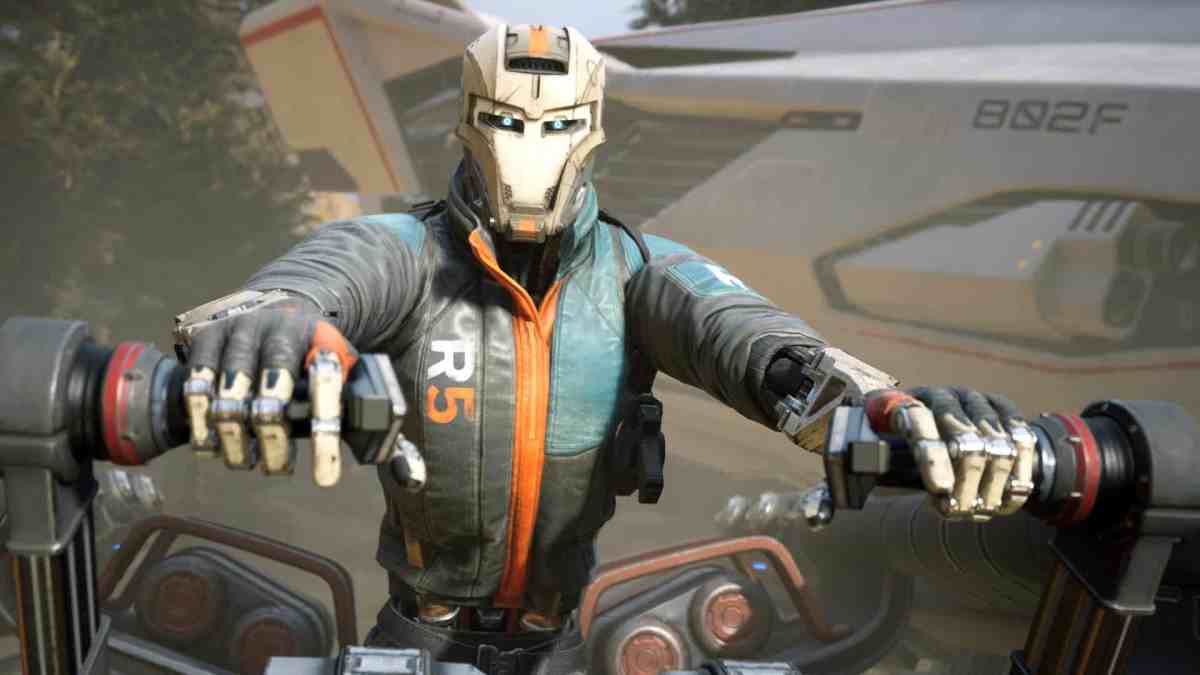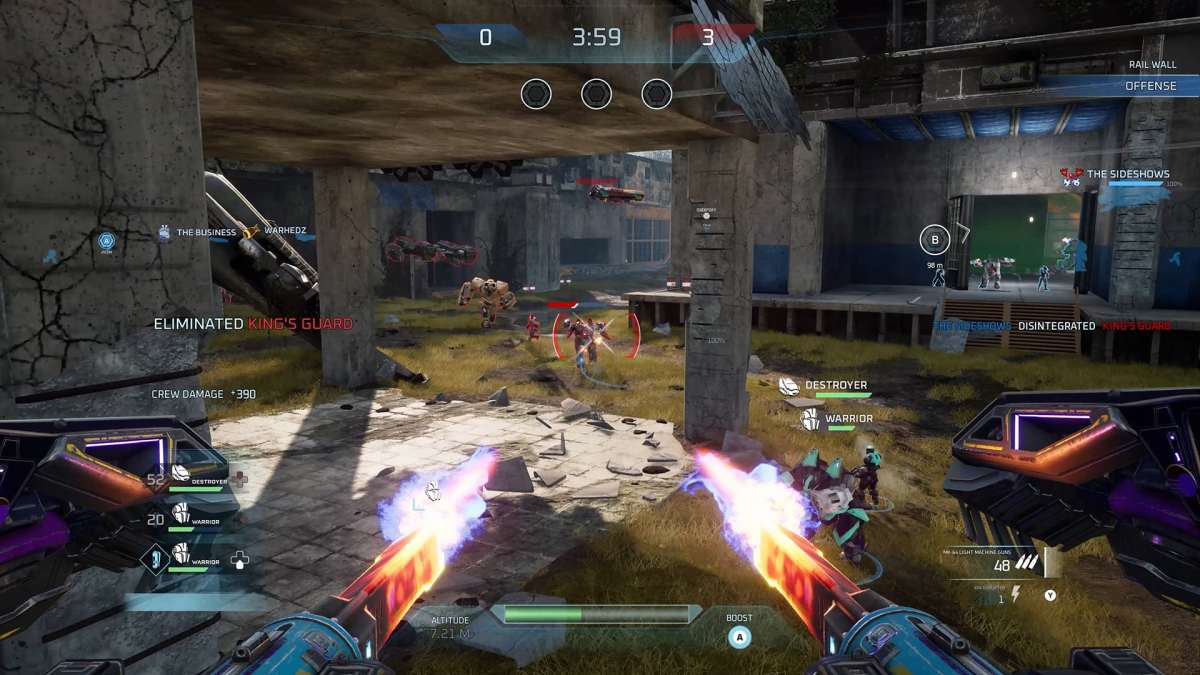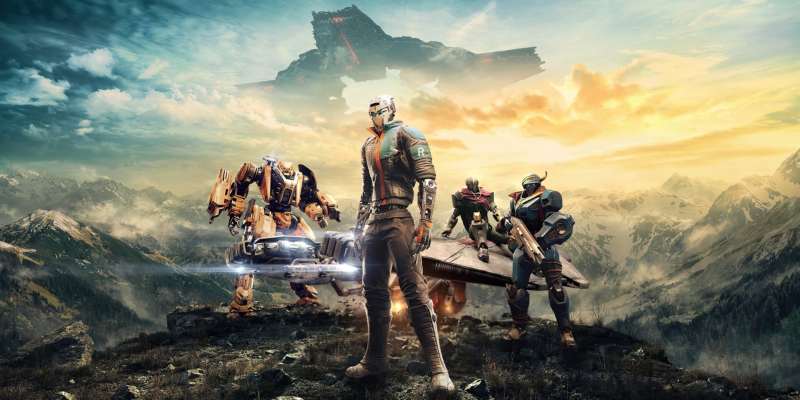It’s funny how much Disintegration brings to mind Destiny of all things. Both are projects by Halo veterans, each game offering something different in the first-person shooter genre. In Disintegration’s case, it merges MechWarrior’s vehicular action with real-time strategy in the vein of Republic Commando. To the game’s credit, it does a solid job for the most part — but unfortunately, Disintegration also shares in Destiny’s early struggles with storytelling and pacing.
When Disintegration achieves its goal of melding strategy and action together, it’s amazing. It takes far too long — almost two hours — for Disintegration to let you just have fun with its design, but once it does, it’s a blast. Players dart around on hovering gravcycles, commanding their squad of infantry amid a hail of gunfire. You’re the team’s tank, artillery, and medic all in one, taking on building-sized threats while tossing out health, orders, and covering fire for your soldiers.
Battles are fast and furious, pitting you in close quarters against armies that dwarf your forces. Every member of your squad brings a powerful ability to the table, from area-of-effect slow fields to mobile bombardments. Many of these abilities can be synced together for devastating power plays. However, if things don’t go according to plan, death isn’t the end for your robotic “armature” squad — just grab their “brain cans” and they’ll respawn in a few seconds. Sadly the player doesn’t get this advantage, but if you stay on offense, some enemies drop health packs, and other regeneration equipment can be found in the field.
That’s really when Disintegration is at its best, flowing so swiftly that you barely have time to breathe. Your enemies make you work for every inch. While initially just waves of grunts, you’re soon juggling attacks from rival aircraft and towering mechs that spew hot plasma. Their attacks leave a mark, blasting holes in buildings and defenses that force you and your opponents to always stay on the move.
This also translates over to the multiplayer, which has improved drastically. I look forward to seeing how it holds up once more players have kicked the tires, as the cleaner HUD, an announcer that clearly directs players how to play each mode, and new unit classes help Disintegration’s design shine online. Multiplayer throwing in enemy units with abilities unavailable to you in the campaign is a great hook, though I do wish they’d have been implemented in the campaign.
This is one of Disintegration’s biggest problems — its token progression system. When I said Disintegration fails at pacing, I didn’t just mean the story. You have to earn the right to have a fully capable team with better stats and reasonable recharge times on abilities. I’d understand if there were some sort of ongoing meta game warranting a drip feed of upgrades, but that’s not the case.
Instead, the grind for more salvage and computer chips appears to be a misplaced attempt at incentivizing revisiting the campaign. You never unlock anything besides stat boosts like health and damage output, so you don’t really think that hard about your choices. You can’t even choose your party or gravcycle’s loadout before starting a mission.

Acquiring upgrade resources also grinds every mission to a halt, making you stop and search for out-of-the-way crates full of salvage. It’s contrived at best, made extra tedious given you can only assign all your units to unlock a single crate rather than being able to order them to multi-task. In battle, that’s not as big an issue, but it’s glaring when you’re just sitting there, waiting to get back to the action.
The game’s narrative design is just as disjointed and in the way, following the story beats one expects, but never nailing any of them. The context is rather simple — humanity was going extinct, so the majority of the population converted themselves to armatures, their brains kept alive so that they might have organic bodies again after all the ecological disasters had subsided. Some of these armatures, the Rayonne, decide they want to stay machines and rise up as a dominant faction, forcing others to convert into machines. You fight against them as a former celebrity pilot, alongside a growing resistance known as Outlaws.
See how I condensed that into a paragraph? It might take you the entire game to put that together. I’m astounded at how poorly Disintegration communicates the simplest of ideas. I only know the information I cited above because I read up on the game before playing. You get the feeling that the story expects you to have done your homework before starting the campaign, and it never really stops to rectify this. It just gets sloppier the longer you play.
A major character reveal is spoiled by a random optional bit of dialogue, only for that reveal to be brushed aside as quickly as it’s brought up. Two characters suddenly have a romantic interest despite barely interacting at all. Another character’s fate is spoiled in a menu screen. There’s a main antagonist but he’s less present than the big bad in Anthem.

Disintegration does try its best to mesh the tactical options available with the theme of each mission, but this can lead to aggravation as you’re forced to use sub-optimal gear for emotional payoffs that Disintegration never earns. There are even attempts to jam in pre-mission conversations a la Mass Effect, but all you do is run around an otherwise empty area just to hear random dialogue. The only incentive to do so is the off-chance they’ll give you a bonus objective to complete in each mission. Again, things are dragged to a halt for poor reasons.
It’s not that Disintegration’s aesthetics aren’t solid. Despite some stiff animations on the “natural” human characters present, the rest of Disintegration looks and sounds great. There’s some real talent voicing these robots — they sell the camaraderie despite how cliche each cast member is written. That’s not enough though, and it makes getting through Disintegration’s opening hours a slog till the gameplay takes center stage.
I see enough promise here that I hope in a few years I’m looking at a sequel or whatever else V1 Interactive has in mind. It’s also clear that V1 tentatively listened to the feedback on its multiplayer beta, which is a good sign that leaves me hopeful. Like with Destiny, there’s still a chance for something great, but Disintegration isn’t there yet. But if you like hidden gems like I do — and can get past a robotically told story and some odd design choices — there is a soul to Disintegration.
